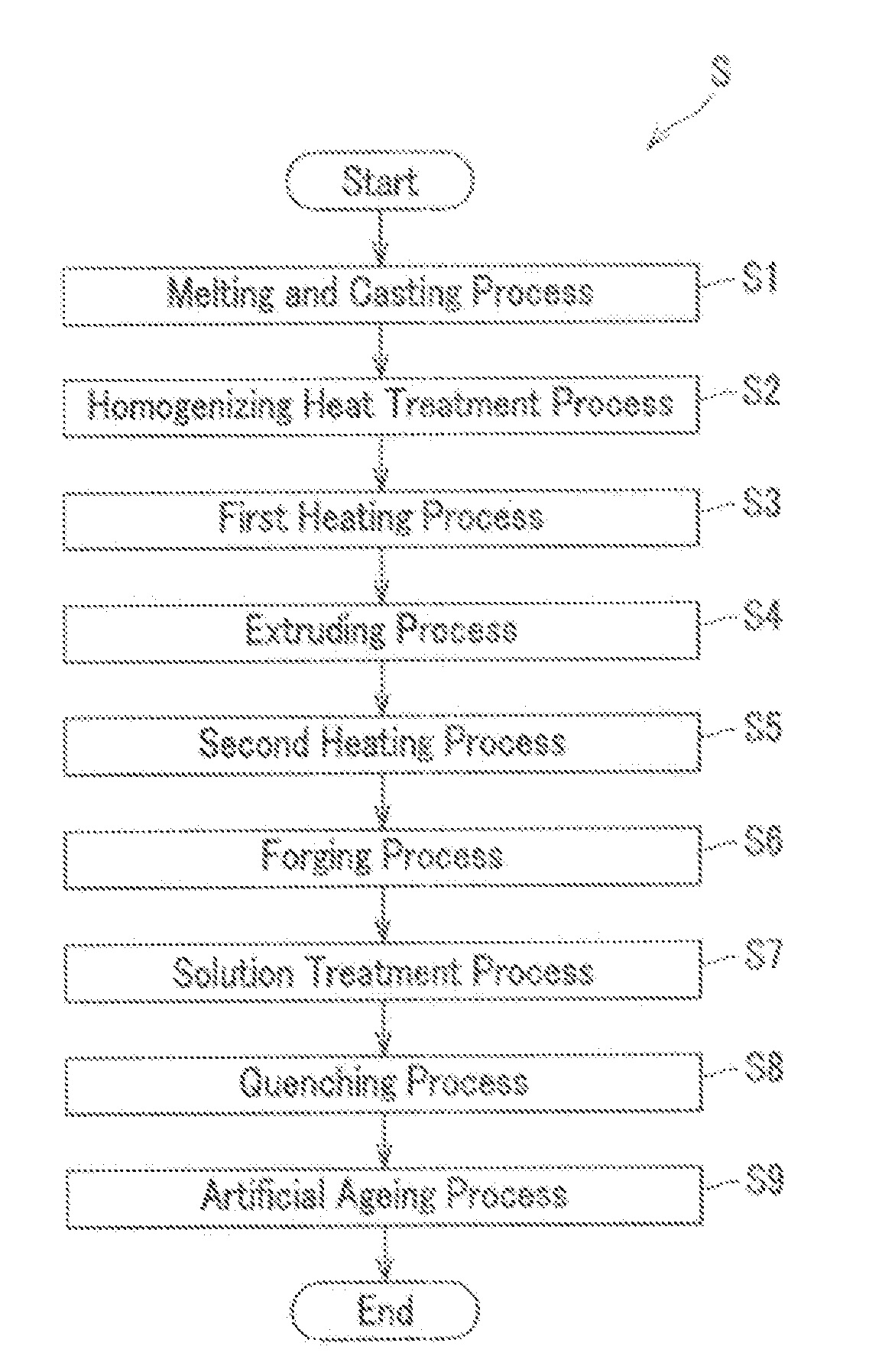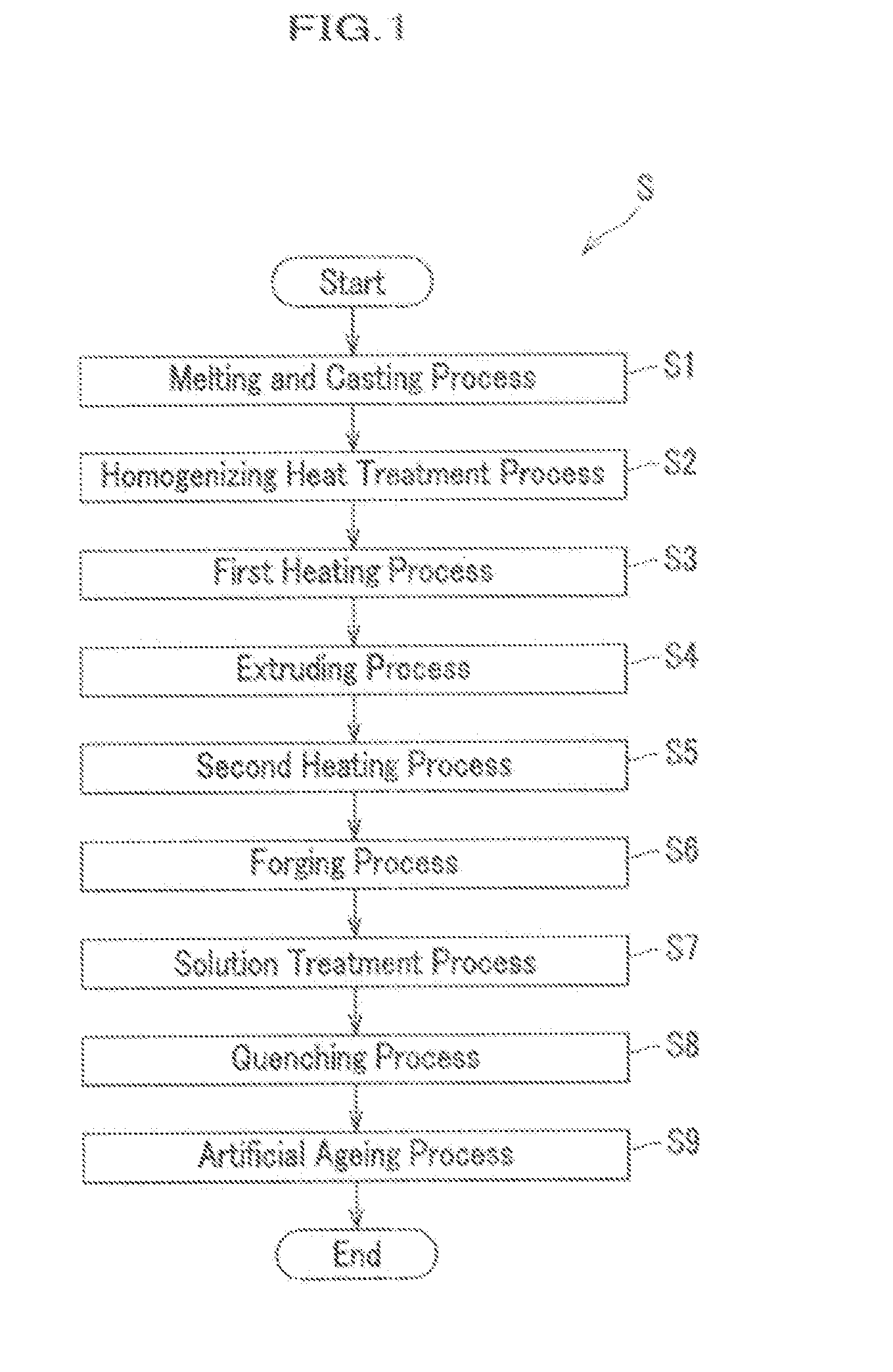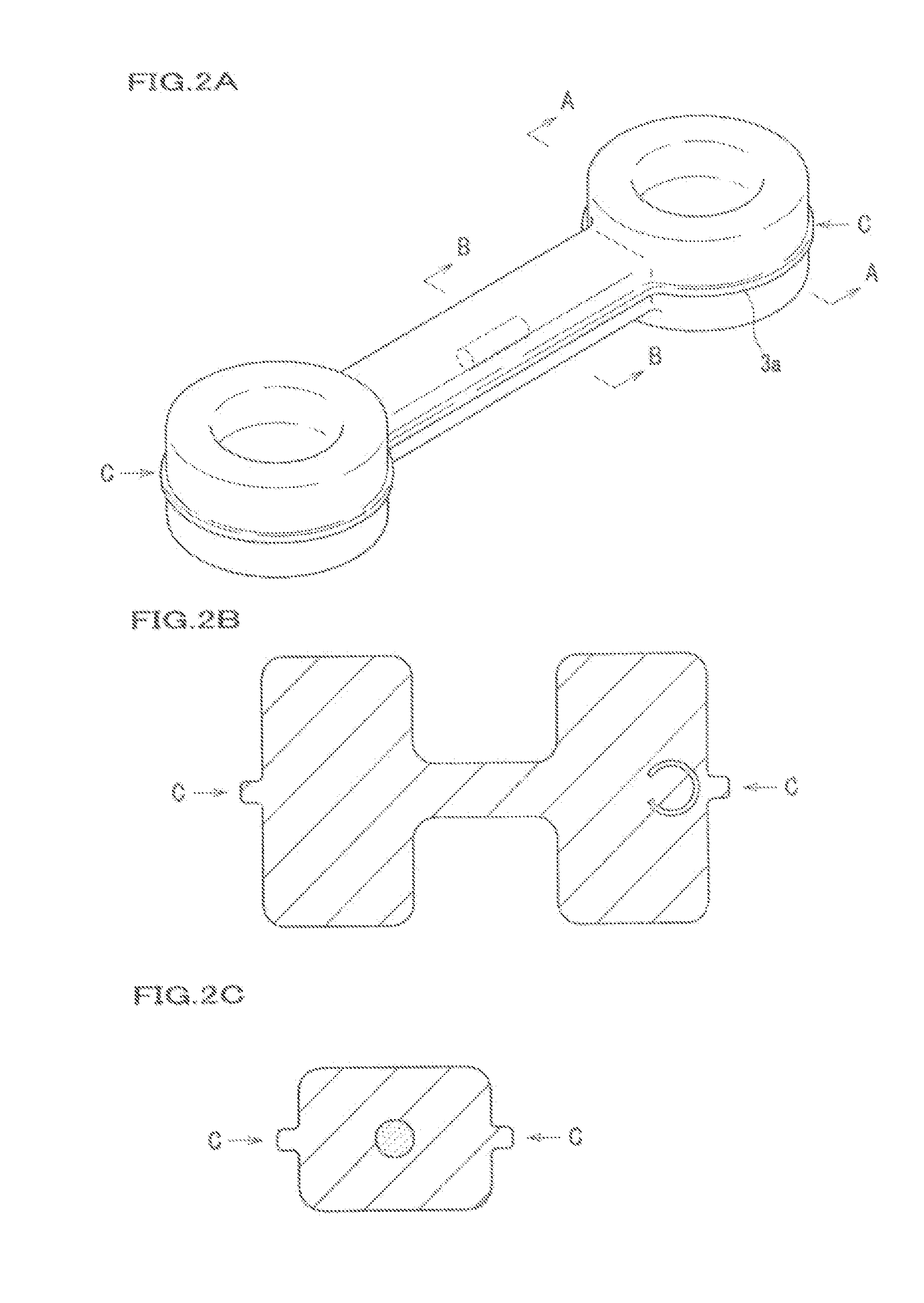Aluminum alloy forged material for automotive vehicles and production method for the material
a technology of aluminum alloy and forged materials, applied in the field of aluminum alloy forged materials, can solve the problems of material likely not to have good corrosion resistance, material not having sufficient strength, and tensile strength decline, and achieve high yield strength, high tensile strength, and large elongation
- Summary
- Abstract
- Description
- Claims
- Application Information
AI Technical Summary
Benefits of technology
Problems solved by technology
Method used
Image
Examples
working example
[0085]Next, the present embodiment is explained based on test results of working examples of aluminum alloy forged materials which are within a scope of the present embodiment and comparison examples of aluminum forges materials which are out of the scope of the present embodiment. It should be noted that the present embodiment is not limited to the following working examples to be explained. The following properties have been evaluated for each of the working examples and the comparison examples.
Alloy Composition
[0086]The alloy compositions were measured with an optical emission spectrometer, OES-1014, which was produced by SHIMADZU Corporation. A measured portion of each sample was not predetermined.
Tensile Test
[0087]Tensile tests in accordance with a JIS Z2241 were performed on three test samples of each of the working examples and the comparison examples, winch corresponded to fourth test samples in accordance with JIS Z2201. For each test sample measured, a tensile strength, a ...
working examples 1-11
, Comparison Examples 1-21
[0094]In FIG. 5, alloy compositions of aluminum alloys of which tested aluminum alloy forged materials are made are shown. The underlined element composition of the aluminum alloys of the comparison examples in FIG. 5 is out of the range of the corresponding element composition of the aluminum alloys of the present embodiment. A value following “<” indicates that the corresponding element composition is below the value. In this case the value after “<” indicates a detection limit of the measurement device used.
[0095]Various aluminum alloys of compositions as indicated in FIG. 5 before cast are respectively heated to 720° C. and cast at a casting speed of 30 mm / minute on the hot-top casting method. The obtained ingots have respectively a diameter of 300 mm. The ingots were heated to 540° C. at the heating speed of 1.5° C. / minute, kept at 540° C. for 8 hours and cooled to lower than or equal to 300° C. at the cooling speed of 3° C. / minute to perform the homog...
working examples 12-17
, Comparison Examples 22-53
[0102]The aluminum alloy of working example 3 in FIG. 5, which has a composition of 1.20 mass % of Si, 0.45 mass % of Fe, 0.07 mass % of Cu, 1.00 mass % of Mg, 0.02 mass % of Ti, less than 0.02 mass % of Zn, 0.65 mass % of Mn, 0.20 mass % of Cr, less than 0.01 mass % Zr, 0.15 ml / 100 g Al of H2, and a remainder of Al and inevitably contained elements, was used to produce various aluminum alloy forged materials (working examples 12-17 and comparison examples 22-53) in the same way as working examples 1-11 were produced according to production conditions indicated in FIGS. 7A, 7B. The production conditions other than those described in FIGS. 7A, 7B were the same as used for working examples 1-11. The underlined value of the production condition in FIGS. 7A, 7B is out of the range of the production condition in accordance with the present embodiment.
[0103]Tensile test samples and SCC test samples in the C-ring shape were taken from portions indicated in FIGS. ...
PUM
| Property | Measurement | Unit |
|---|---|---|
| tensile strength | aaaaa | aaaaa |
| equivalent circle diameter | aaaaa | aaaaa |
| melting temperature | aaaaa | aaaaa |
Abstract
Description
Claims
Application Information
 Login to view more
Login to view more - R&D Engineer
- R&D Manager
- IP Professional
- Industry Leading Data Capabilities
- Powerful AI technology
- Patent DNA Extraction
Browse by: Latest US Patents, China's latest patents, Technical Efficacy Thesaurus, Application Domain, Technology Topic.
© 2024 PatSnap. All rights reserved.Legal|Privacy policy|Modern Slavery Act Transparency Statement|Sitemap



